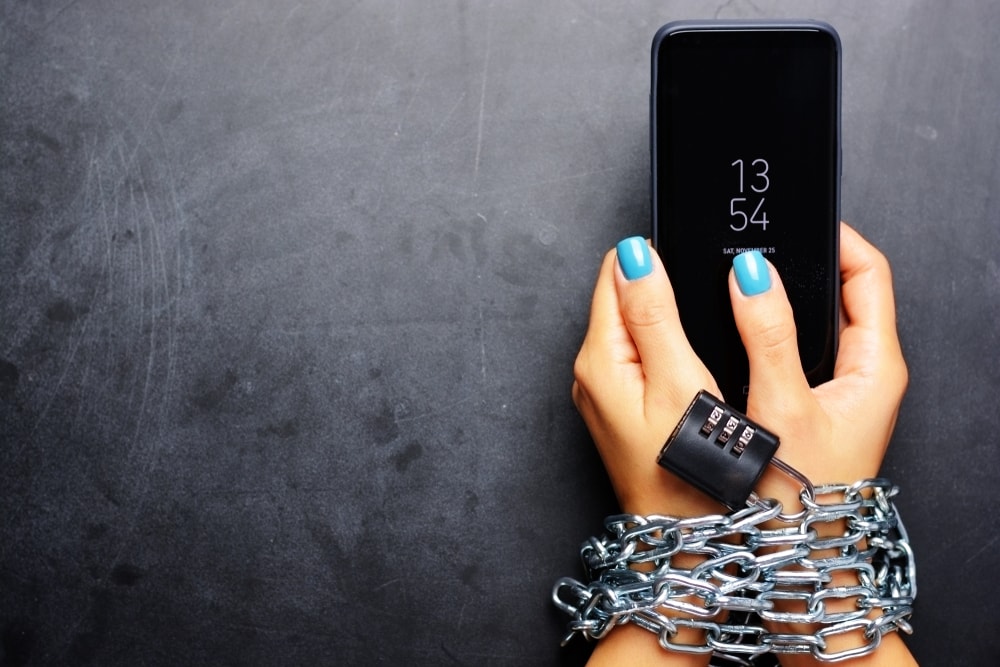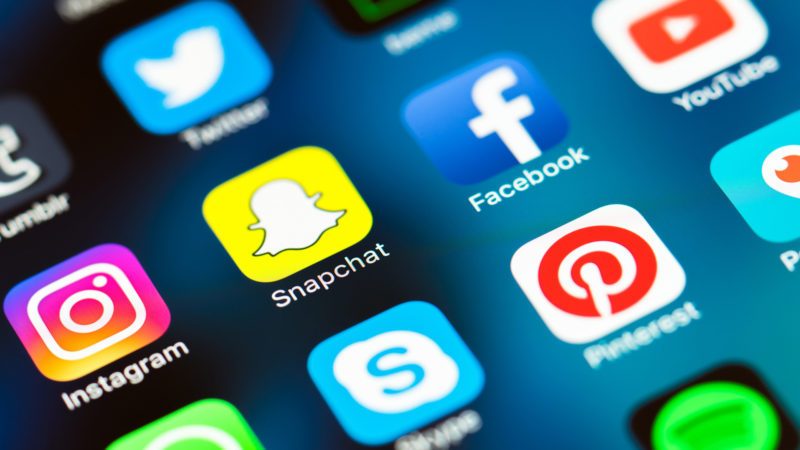RIO DE JANEIRO, BRAZIL – There are two industries that call their clients users: drugs and software. From this link emerged The Social Dilemma (directed by American filmmaker Jeff Orlowski), the documentary (with dramatized sections) everyone is talking about, screened in February at the Sundance Festival and which has just entered the Netflix catalog. The moment to premiere it could not be more appropriate: Covid-19 has left us, among many other things, addicted to social media.
Although there are no official data on the number of new addicts, psychologists agree that “this pandemic has virtualized us, because with no other alternative we had to learn how to relate, how to adapt to telework, online classes, remote medical consultations… WhatsApp, Instagram, TikTok, and Twitter have become an extension of our real life, the inevitable way to relate”, as summarizes Ana Belén Medialdea, a health psychologist specialized in fast strategic therapy and social media user, where she has over 23.000 followers on Instagram alone. But how can something as positive as the connection with others turn against us?
The answer is that social media is designed to play with our vulnerability (as the film says, and thus make money) and we become addicted because they all meet one of the basic needs of the human being, that of developing a sense of belonging (as psychologists explain).

The problem came with one of the ingenuity of these networks: the creation of the Like button on Facebook (which later spread to other networks), a click that connects directly to our brain’s gratification system. Just like any other addictive substance. “The positive feedback makes our brain release endorphins -these chemical substances in charge of producing our well-being, so we associate the positive reinforcement to the pleasant sensations we feel when receiving this stimulus, which in turn becomes addictive”, adds Medialdea. The first thing to emerge, therefore, is a deep disenchantment. This is something that the two user profiles that open this article also have in common.
We can’t be surprised that a year like 2020 has accelerated the negative consequences of this dependence. In fact, there are now studies that relate the frequent use of social media during the pandemic to a higher prevalence of mental health problems. According to the Spanish Higher Institute of Psychological Studies, technological dependence (also called “drug-free dependence”) mainly affects adolescents, who when abusing social media experience abstinence syndrome, emotional malaise, dysphoria, insomnia, irritability and restlessness. This is not exclusive to the youngest: in adults, it also causes withdrawal from real life, anxiety, reduced self-esteem, and loss of self-control capacity.
Instagrams and Twitter, havens for the dissatisfied and insecure
The hook is direct: “Social media can be addictive because it contains several elements that attract us greatly: first, access to information from other people we know, admire, or have heard of. We are curious by nature and this arouses curiosity. It also provides access to the information we need, immediate contact with other people, and entertainment that changes constantly,” says Silvia Congost, a psychologist who specializes in emotional dependency and self-esteem, who also gives advice on Instagram, where she has 126,000 followers.
A few days ago, in fact, Instagram completed a decade, transformed into a social media capable of influencing and shaping the behavior of its users, as the documentary adequately explains. Medialdea drew a profile of the people most prone to become addicted: “Between 16 and 38 years of age. The group most at risk is usually adolescents, because of this need to search for something new and to feel recognized and part of the group, proper to their age. They become addicted thanks to immediate gratification, positive encouragement, and imminent reinforcement.
These are profiles that have a certain psychological vulnerability, such as the search for strong emotions, impulsiveness, intolerance to frustration… or even people who already present a former clinical condition of low self-esteem, rejection to their own person, excessive shyness, need for approval… In these cases, addiction to social media can represent an escape route to not being forced to face the changes that need to be made in their lives in order to address these issues,” explains the psychologist.
In turn, Twitter is not so much based on teaching the perfectly edited side of life, but rather on expressing one’s own opinion to the world. People can put forward any idea: if you are welcomed, you become a star for a moment, making you feel important (or allowing you to argue, if that’s what you like); if no one comments, it doesn’t matter either, you fall into an infinite cyber-universe of which we can continue to feel a part.
Scrolling can be eternal. “Being a social media where the contents are typically short, it generates a feeling of continuing to try to satisfy the need to obtain other answers or other news that may please or satisfy us more. It creates an urgent need to stay informed. The most usual profile is often of people between 18 and 44 years of age”, summarizes Medialdea.
How to detect that we have lost control? The first thing is often to be afraid of disconnecting. “People who suffer from this are truly afraid of losing something important through social media, of feeling excluded, and this leads them to feel the need to remain connected. Disconnection causes them great distress and they are constantly comparing themselves to others,” Medialdea explains. The next step: frustration.
What do I do: disappear?
However, the answer does not seem to be total disappearance. As The New York Times pointed out some time ago, the tentacles of social media have reached such a point that not being present in them raises questions about one’s legitimacy, popularity, and whether one is up to date. In his pages, Bruce Mendelsohn, digital marketing and social networking consultant, recommends remaining at least on LinkedIn, the professional networking site, since if you don’t show up, a potential employer might wonder what you’re hiding.
Furthermore, social media has its positive function. From his experience with Instagram, Congost sees clearly: “When you use it on a professional level it’s a wonder because it allows you to reach an unlimited number of people, something which would be very difficult to achieve otherwise. Both for the products you want to offer and for the information and help (videos, quotes, inspiring pictures, etc.) you want to give others for free”, he says.
In recent months, the phenomenon has skyrocketed: “During the confinement the use of social media has risen dramatically. I suppose it’s because you can’t go out. We were all locked up at home, and since the human being is social and needs to relate with others, we felt closer through the networks.
We saw what others were doing, what they were publishing, what they were sharing, and so we didn’t feel that far from them. There were also many interviews and live conferences, as well as shows, etc., that people enjoyed to distract themselves and not think about the very complex situation we couldn’t get out of…”, says Congost.
The problem lies if anxiety emerges. But there are several simple practices that help disconnect and find emotional relief to avoid the well-known FOMO, the “fear of losing something”, the fear of staying out of the new social map.

1. Disable notifications
This advice comes from Justin Rosenstein, creator of the famous “like” feature, who worked on Google and Facebook and is co-founder of Asana, an app to improve productivity, in an interview with BBC World.
If you prevent notifications from getting in the way of your routine, it will be easier to concentrate on what you are doing. These balloons are a constant warning that something is happening in the online world, and it makes you feel like you are missing something. “It’s as if you carry a delicious chocolate cookie in your pocket all the time. If you eat it, you would gain weight that you don’t want.
It’s about getting away from something highly addictive,” says this programmer in his interview. The advantage of turning them off, first, is that when we enter social media the experience will be more exciting and rewarding, because we will find more news; and, second, that we will control our time better (and what the apps take from it).
Furthermore, Congost recommends trying to enter social media “being aware of what we are going to look for or what we want to see, since there are so many stimuli that the most likely thing is that you go in looking for something, but get distracted by something else, go from one profile to another and after half an hour (lost) you realize that you no longer remember what you wanted to find.
2. Set limits
The tomato technique teaches us how to organize the time we allocate to a task. It was designed to foster productivity, but it has a psychological explanation. Establishing a determined time to be on social media can be a test of willpower, but it is worth it to get rid of bad habits, such as the constant need to look at your cell phone. A first piece of advice is to establish limits for oneself: “Define times of the day when it is ‘forbidden’ to touch the cell phone or enter the networks,” recommends Congost. Medialdea sees it from the following perspective: the time we stop using them will be a moment of “digital freedom”.
Another good idea is to set a timer: choose a daily or weekly limit according to your need to disconnect, and activate it every time you enter a social network. When you reach the limit, be strong. As a reference, you can take a recent study from San Diego State University (California), according to which the happiest people are those who spend less than one hour a day connected. If you need a longer digital rest period, some experts say that for it to be effective, it must last at least three days. One thing that can help is to focus on being more present, with practices like meditation and mindfulness.
3. Find a hobby
Just as it occurs when someone stops smoking, or eating to satisfy emotions, when cutting off social media people may not know what to do with that time. Looking for a specific occupation that pleases us will help us keep our attention on it and provide a healthier satisfaction to our brain, so that we won’t miss going on social networks so much.
4. Turn them into a small luxury
Just as we occasionally reward ourselves with a manicure, a candy, or any other pleasurable experience, it is possible to convert the use of social media into a small reward when you have achieved something productive. This habit will change your way of thinking about it.
5. Delete unused Apps
One of the anxiety mechanisms makes us afraid to let go of things. It occurs, for instance, with clothes: as usual, having a full closet and nothing to wear. In the digital plane something similar occurs. But, as Marie Kondo, guru of the domestic order (and also of how to face chaos) would say, if it’s been a year since you’ve worn it, throw it away. Several experts who speak in The Social Dilemma agree: has it been months since you looked at Twitter? Remove it from your cell phone and discard the feeling of needing it.
And since you are to delete it, Congost proposes an exercise: to analyze if there are some profiles that we follow and create anxiety or discomfort. If this is the case, the reaction is direct: “Stop following them”. Medialdea agrees: “You establish priorities, you get rid of people you follow in the networks and you are left with only those accounts that contribute something and nurture you as a person”.
Source: El País

